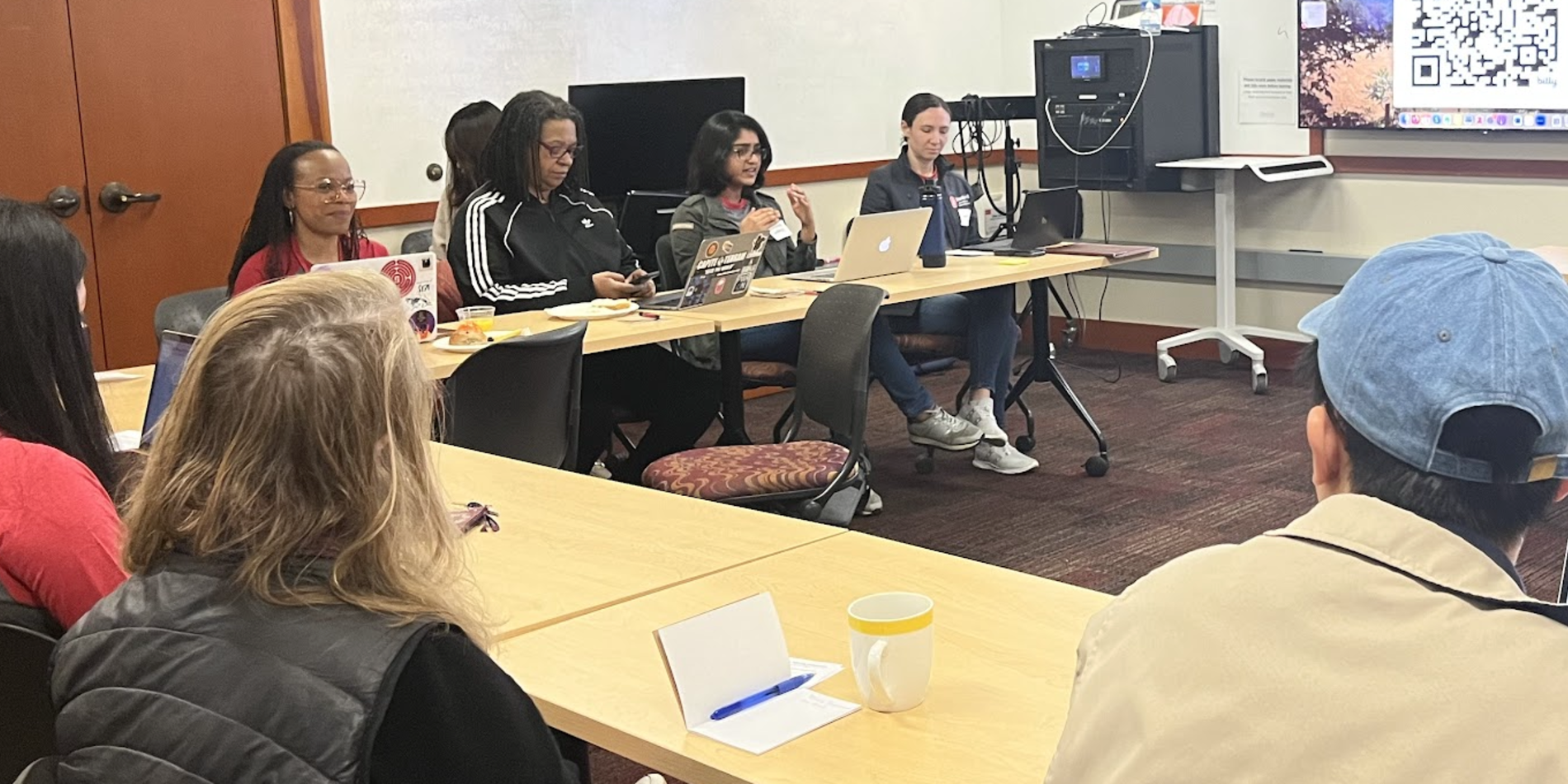Teaching rhetoric and environmental justice
By Jenae Cohn & Ruth Starkman
For Autumn 2018, PWR’s Emily Polk teamed up with Sibyl Diver, a research scientist who works with indigenous communities on water governance issues, to teach PWR 194EP, a unique Advanced PWR that examines the ways that the rhetoric of race, class and gender shape environmental battles including Standing Rock and Flint, Michigan. Entitled "Introduction to Environmental Justice: Perspectives on Race, Class, Gender, and Place," this class recognizes the legacies of trauma that mark the environmental movement and, in response, aims to help its students to understand, critique and communicate environmental problems, which are co-produced with problems of social equity, through an environmental justice lens.
Emily and Sibyl’s partnership emerged out of a strong and pressing need to bring environmental justice conversations into Stanford curriculum, not just for students in the environmental sciences, but for numerous students interested in communicating environmental justice topics across campus.
The quarter began with conversations about humility, non-violent communication, and situated knowledge. As students developed knowledge on these topics, they applied these concepts to their own environmental justice research projects. Through completing exercises on genre analysis, rhetorical strategies, power mapping to think through target audiences, persuasion strategies and methods for achieving social change, students made choices about how best to communicate their research ideas as part of the environmental justice conversation. Students decided to pursue projects on a wide range of topics, like food justice issues, militarization of sacred spaces in vulnerable communities, religion and climate justice, and ways to institutionalize environmental justice curriculum in universities and as part of nonprofit organizations.
The students’ conversations about their research projects were amplified by a weekly Environmental Justice speaker series that culminated in a mini-symposium, where thought leaders on the front lines of Environmental Justice from all over the west coast and Canada came and talked to the students. “We wanted students to be able to hear first-hand from people, rather than just reading their work, and topics covered included youth and climate activism, food justice, indigenous land and water rights, and queer ecologies,” said Emily. While the topics varied, all focused on the argument that vulnerable communities have always suffered disproportionate environmental harm while also offering strategies and solutions based on years of advocating for and organizing on behalf of their communities.
“I think it was inspiring for our students to see every speaker focused on storytelling as the central means for educating, changing people's minds, and inspiring social change,” said Emily. The speaker series challenged students to think not only about the content of the story but the mediums and the modes through which those stories get communicated.
It was important to both of them that the speaker series and the final symposium be open to the broader public.
“We have made learning and resources from our class as accessible as possible to the larger Stanford community,” Sibyl said. “We have opened up our guest lectures from frontline environmental justice leaders to the broader community. We have also organized lunches with students following speaker presentations, and connected speakers directly with other Stanford faculty and staff.”
Both Emily and Sibyl have been grateful for their ability to collaborate with each other, but also to form partnerships with individuals both on Stanford campus and as part of California environmental justice organizations. Faculty, staff, and students in Earth Systems, Earth Systems Science, CSRE, Handa Center for Human Rights and Urban Studies contributed in different ways to making this course possible--whether that was through helping to provide transportation for a field trip or support for a course assistant (Earth Systems) or funding for guest speakers (School of Earth) or space and food for the Environmental Justice Symposium (Haas Center). Emily spoke highly of these collaborations, explaining, “I have learned so much about effective ways of centering writing and rhetoric inside these larger institutional conversations about justice and I've been so grateful to see the way students are participating in the environmental justice conversation through their own research process.”
Above all, students in Emily and Sibyl’s class felt a strong sense of agency in producing their projects, focused on creating social change. “What we hope that students get out of this is a framework for understanding environmental justice as an inclusive social movement, and a framework for exploring opportunities for meaningful social change,” said Sibyl.
Through engaging in frequent collaborations and support of each other, students felt a sense of shared mission. Emily’s favorite aspect of teaching this course has been witnessing this shared mission come together: “I think one of the things I've really loved about the class so far is the way in which we've been able to model justice not just in our research projects but in the class community that we have created and nurtured together. These are difficult and anxious times we are living through. I feel like our class has such a tender vibe of care and respect and concern for one another. It's a diverse class with a range of cultural and life experience but there is a feeling of taking care of each other that we all have and I love how the practice and process of writing together helps us to create this space together.”



